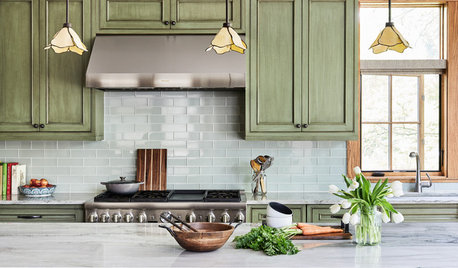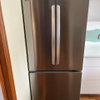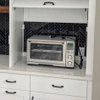In a 2012 topic, http://ths.gardenweb.com/discussions/2243080/wall-mount-range-hood-or-under-cabinet-range-hood?n=4 juliano_moreira wrote today:
Hello Kaseki ! have you finished your project ? can you share what you ended up doing ?? :)
Because the answer to this question is off topic to the other thread, I have answered in this new topic.
-------
I just 98% finished a deck project, and finished (if that term ever
applies to gardening) some garden and lawn rearrangement projects, and
am engaged in some painting projects, but perhaps you are referring to
my kitchen ventilation MUA project, completion of which has been
deferred due to many other projects since 2012.
In the MUA case, without taking the space to
discriminate between completed, uncompleted, and yet-to-be-done aspects
of the project, the bullets below define the path from outside to
kitchen and control of water and air flow. Please note that every MUA
situation is unique, possibly requiring a unique solution, and that more
than one solution can be suitable for a given situation.
Due to
variability of ventilation flow among two kitchen blowers, and three
bathroom fans, while allowing operation of a fireplace, and avoiding oil
burner exhaust leakage (even with oil burner MUA), I need to keep the
internal house pressure near zero differential with the outside.
From the outside:
Empty
down-blast blower housing used as a air intake (looks like a big
mushroom) on roof over attic away from ventilation exhaust blower
housings
Ducting to an in-line blower in attic
In-line blower
Ducting to the air filter
Possible
motorized damper (the pressure drop across the air filter seems high
enough that household heat cannot flow upwards to the attic from natural
weak pressure changes
Pleated air filter in caddy
Hydronic to air heat exchanger (about 2 x 2 ft) (just above diffuser)
Ceiling diffuser (about 3 x 3 ft OD in hall leading to kitchen)
Control system for heat exchanger
A
larger version of the typical residential Taco hydronic circuit pump.
This is mounted with many other Taco hydronic pumps on a manifold
supplying heat to the house from an oil burner
One circuit from the two Taco multiple circuit control boxes in use
Taco
control for this circuit is established by the OR circuit made up of
two thermistor-driven relay modules (industrial thermostats). One
senses the temperature at the living area side between the diffuser and
heat exchanger and one senses the temperature of the heat exchanger
copper plumbing at the exchanger. The former is for air temperature
control and the latter is backup to avoid freezing. These have some
built-in hysteresis
Control system for the in-line blower
Differential
pressure is sensed between kitchen and attic. The attic is well
ventilated to the outside while protected from wind that would require a
very complex sensor to avoid erroneous pressure measurements.
Air lines from passive sensor housings lead to a pressure-to-current transducer within a control system
The
transducer generates a control loop current proportional to
differential pressure. This current is used to trigger relays for
enabling functionality, as well as drive a Fuji computer performing a
P-I-D control loop function
The computer in turn generates a control current to the MUA blower motor driver
Components for this loop (except the motor driver) are made up of DIN rail-mounted devices.
kas






avamom2012
kasekiOriginal Author
Related Discussions
do i need mua in 1930's home without hvac
Q
High Cfm Range Hood Make Up Air MUA
Q
Cold climate MUA for range hood above 36" Bluestar
Q
Stovetop wall hood - CFM and MUA advice
Q
daisychain Zn3b
kitchengirl
kasekiOriginal Author
kitchengirl